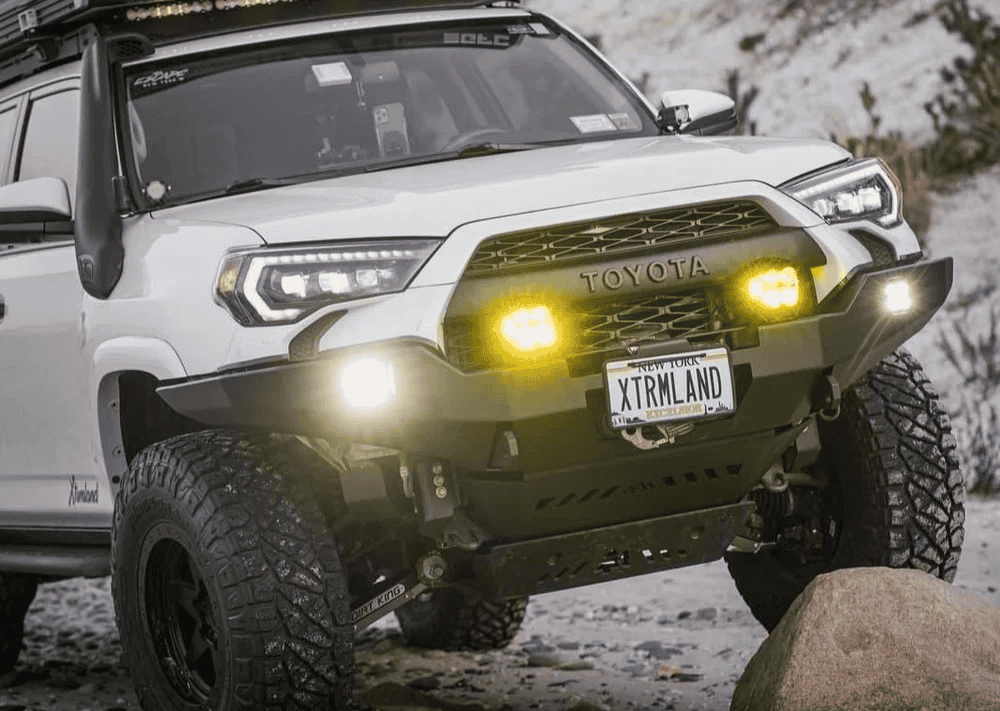Overland Vehicles

A big offroad vehicle is not just large. It is a system tuned for traction, clearance, and control. Think approach and departure angles, a useful breakover, stout driveline parts, and enough tire to float over ruts without losing steering feel. Wheelbase influences all of it; short helps with breakover while a moderate wheelbase adds stability on climbs and at speed on gravel.
Axle strength matters when tire size grows. Thirty three to thirty seven inch tires are common on serious builds, but only when matched with proper differential gears and a transfer case with a true low range. Locking differentials help keep the vehicle moving when one or two tires are light, but they also require finesse on tight turns to protect components.
Cooling and airflow are the quiet heroes. Big tires and heavy armor add load. Long climbs at low speed need reliable cooling, healthy fans, and clean airflow through the radiator and transmission cooler. Skipping these details is how momentum fades on a hot grade.
Traction begins with tires. A strong carcass, a sidewall that resists pinch flats, and a tread that clears mud set the tone for performance. Airing down increases the contact patch and softens impacts, but only works well when wheels and bead security are up to the job. Tire choice also ties directly to braking distance, so match compound and size to both terrain and weight.
Gearing is the next lever. Regear when tire size jumps to keep engine power in the right band and reduce strain on clutches or torque converters. Pair that with a transfer case ratio that allows controlled, slow movement on rock, not just a cruise across dirt.
Suspension is not about height alone. The aim is consistent tire contact. Quality dampers manage heat and keep the chassis calm over repeated hits, while springs and control arms position the wheel in a usable arc. Sway bar disconnects or softer rates improve articulation off road and can be reconnected for pavement manners.
Protection comes first. Skid plates shield the oil pan, transmission, and transfer case. Rock sliders carry the body over ledges without sheet metal damage. A front bumper with a properly mounted winch becomes a recovery anchor and an approach angle helper.
Recovery gear must be matched to weight. A simple rule for winch capacity is at least one and a half times the vehicle’s gross mass. Add soft shackles, a tree saver, and a quality kinetic rope for stuck situations where a gentle tug is safer than a yank. Use closed recovery points that are welded or bolted to the frame, not decorative hooks.
Reliability is about systems. Consider extra filtration for dusty trails, breathers that keep water out of axles and transmission, and weather sealed connections for lights and communications. Electrical planning matters as loads grow. Route wiring cleanly, fuse it correctly, and test it under load before long trips.
A word on the wild side. Many videos show crazy off road vehicles doing near vertical climbs. What you do not see is the prep: spotters, rated gear, and a conservatively built platform. The same goes for crazy off road cars with rally roots. They succeed because suspension, tires, and protection are balanced for the exact surface.
When travel stretches beyond a day, range and comfort join capability. Extra fuel or thoughtful fuel planning, onboard air for tire management, and cabin organization reduce stress and make every stop efficient. Simple, reliable water storage and safe food handling keep energy up when the trail throws surprises.
If you want a vehicle that bridges daily life and deep trail travel, smart planning is the multiplier. Start with the terrain you actually drive, then size tires, gearing, and suspension to match. Build armor and recovery around real weight, not a guess. Test, adjust, and keep notes.
In Northwest Arkansas and beyond, our team takes this approach on every project. See how we think through platforms and packages on our overland rigs hub. For a tailored path that aligns with your routes and payload, explore our custom overland upfit process. Curious about our standards and the way we hand off trail ready builds with clear education and support? Visit why choose OZK Customs.
Builds should feel confident, not complicated. Bring your goals, we will map the rest and deliver a rig that drives like it should on pavement and shines when the road disappears.
Ready to turn your vision into a trail proven rig? Tell us how you travel, and OZK Customs will design a build that fits your routes, payload, and style. Start your overland plan today and get a quote.
ADDRESS:
6159 E Huntsville Rd, Fayetteville, AR 72701
PHONE:
(479) 326-9200
EMAIL:
info@ozkvans.com